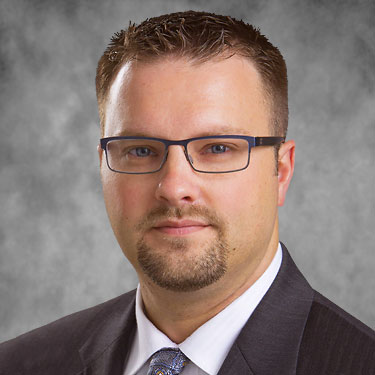“Some of today’s smartphones are equipped with pulse oximeter capabilities, and since many patients have access to this technology, my colleagues and I pondered the accuracy of such devices, specifically for patients with lung disease,” says J. Brady Scott, MSc, RRT, RRT-ACCS, AE-C. “Although some studies conducted on healthy subjects demonstrated promising results, studies including patients with hypoxemia were lacking, and we felt there were significant gaps in existing literature.”
For a paper published in Respiratory Care, Scott and colleagues assessed the reliability smartphone pulse oximeters. They conducted a prospective, observational study that involved noninvasive measurements of oxygen saturation and heart rate using three devices: the hospital-grade Masimo Radical-7, Kenek Edge with the Apple iPhone 6S, and the Samsung S8 smartphone. “We wanted to know if smartphone pulse oximetry provided helpful information for patients with hypoxemia or those at risk of becoming hypoxemic,” Scott says. “We felt these patients might benefit the most from the technology, but we were unsure if the information provided on oxygen saturation and heart rate was accurate.”
Mixed Oxygen Saturation Measures
The researchers measured oxygen saturation in patients who performed a 6-minute walk test (6MWT) in a pulmonary function laboratory, comparing findings of the Masimo Radical-7 with a forehead probe to the two smartphone devices, with measurements all taken simultaneously. All results were analyzed with the Spearman rho correlation test, and Bland-Altman plots were used to assess the agreement of measures between the devices.
Of the total patients enrolled in the study, 30% had pulmonary hypertension and 23% had COPD. Measurements for smartphone pulse oximeters were recorded immediately before and after the 6MWT using the same finger or arm when possible. Measurements were collected with all 3 devices simultaneously. Pretest and posttest results were obtained for each subject. When devices failed to provide a heart rate or oxygen saturation value, it was recorded as “unable to obtain.” The number of participants who were unable to obtain oxygen saturation measurements was higher with the Samsung device than with the Apple device in both pretest and posttest measures. In contrast, the hospital-grade Masimo device was able to measure oxygen saturation in all subjects.
“With some patients, the smartphone provided accurate measures, whereas with others, it did not,” says Scott. “Additionally, and of concern to our team, the smartphones did not display a result at all sometimes. The two smartphones used in our study read oxygen saturation consistently lower than the hospital-grade pulse oximeter. (Table).”
Pulse oximeters have known limitations due to low perfusion, skin pigmentation, intravenous dyes, motion artifacts, nail polish, and dyshemoglobins, according to Scott and colleagues. “At this time, it is uncertain what factors, if any, affect the reliability of smartphone pulse oximetry,” they write. “Further research is suggested for patients with lung or cardiac disease who may have conditions affecting blood flow to the fingers to assess whether skin deformities impact reliability of smartphone pulse oximetry technology.”
More Research Needed on Clinical Utility of Smartphones
Due to the inconsistent results, particularly the undetected measurements, the study team cannot recommend using smartphone-based pulse oximetry. “Our research indicates that smartphone oximeters are not a reliable method to obtain heart rate and oxygen saturation measurements in patients who are at risk for hypoxemia,” Scott says, adding that smartphone manufacturers include disclaimers that the apps are not intended for use in disease diagnosis despite some individuals continuing to use the technology to monitor their heart rate and oxygen saturation. “Further studies evaluating smartphone pulse oximeters compared with hospital-grade, finger-probe oximeters and compared with blood oximetry are warranted.”
If smartphone manufacturers continue to incorporate physiologic-monitoring capabilities on smartphones, Scott says that researchers will need to continue to assess the clinical utility of the technology. “Future studies should also consider patients with various disease states and other patient characteristics that might influence the accuracy of smartphone devices.”


 Rebecca Shover
Rebecca Shover